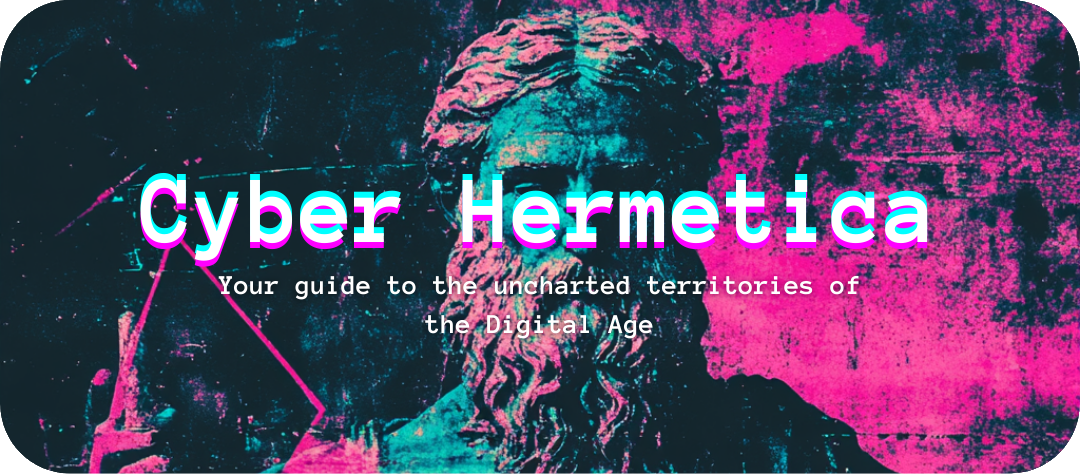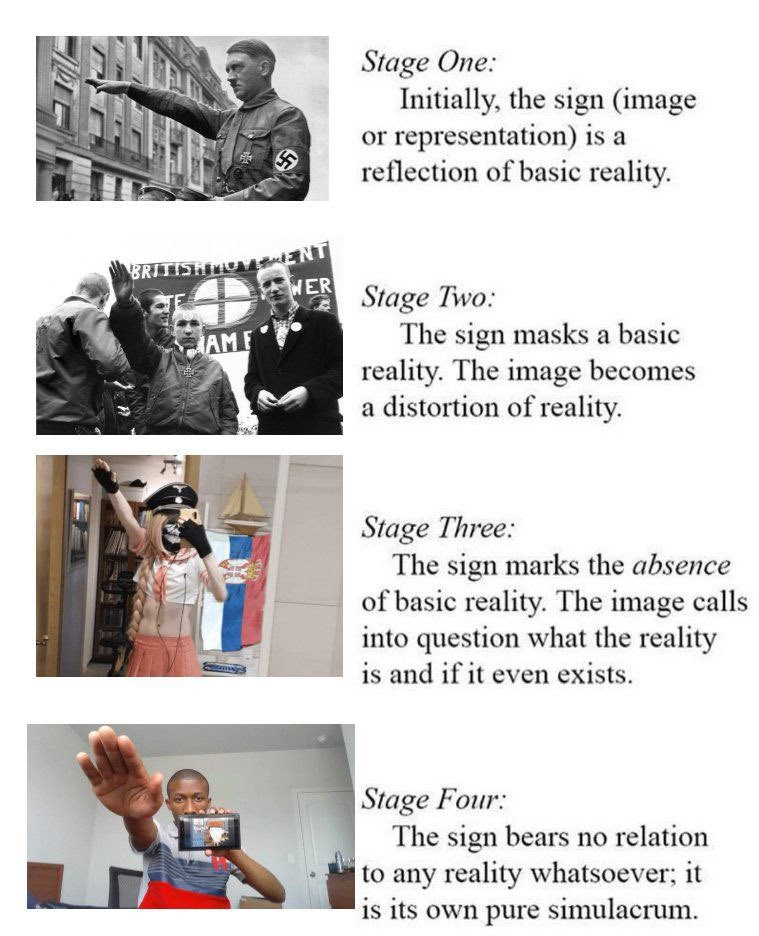Hi there, I’m Matte. Privacy & Cybersecurity professional by day. Schizo-Cyberoccultist by night. Every sunday I bring you a weekly dose of schizophrenization, blending insights into the Digital Age, echoes from the past and digital survival tips. If you like this, you might also enjoy my other columns, where technology, philosophy, and digital survival converge.
SCHIZOHIGHLIGHTS
Semiotic flashes: moments from social networks and personal considerations about stuff.
Spotify and Digital Necrosis
An investigation by Liz Pelly, part of the book Mood Machine, has revealed that Spotify has an internal program called “Perfect Fit Content”, through which it creates and promotes music that is more economically viable than that of independent artists. This phenomenon primarily affects passive listening genres such as jazz, electronic, lo-fi, and ambient music. The goal is clear: to reduce or eliminate royalties paid to artists, favoring instead internally produced tracks.
A recent article suggests that many of these tracks may even be generated by AI, either by Spotify itself or by third-party partners. The suspicion arises from the presence of numerous identical melodies disguised under different artist and song names across the platform.
This mechanism is further amplified by Spotify’s profiling and recommendation algorithm, which is highly sophisticated and operates in three main stages:
User Behavior Analysis – Spotify tracks what songs you listen to, for how long, which ones you skip, which playlists you create or save, and even at what time you listen to music. More importantly, it also monitors what similar users are listening to.
Machine Learning-Based Recommendations – Spotify employs various AI techniques to suggest music:
Collaborative Filtering – Compares a user’s tastes with those of similar listeners to recommend tracks in real-time.
Audio Analysis – Examines the characteristics of songs (rhythm, tonality, instruments) to determine which ones a user might enjoy.
Personalized Recommendation – Using all this data, Spotify generates custom playlists (such as Discover Weekly or Daily Mix), suggests new songs, and even rearranges tracks in public playlists based on individual listening preferences.
In essence, Spotify is a massive profiling and recommendation machine. In this context, the economic incentive to minimize costs—knowing that most users passively follow algorithmic recommendations—is obvious.
The future for artists and listeners is bleak. If AI-generated music is cheaper (and it certainly will be) than human-created music, platforms like Spotify will have no choice but to rely more on AI-generated content, maximizing their profits while pushing human artists further to the margins.
Soon, the cycle — the algorithmic Ouroboros — will be complete:
Generative algorithms will produce music,
Profiling algorithms will analyze it,
Recommendation algorithms will distribute it,
And users will merely serve as passive sensory machines, their attention harvested for profit.
Three years ago, my opinion on this would have been very different. Back then, I used Spotify as an example to distinguish profiling from personalization, arguing that no algorithm would ever truly be able to recommend music based on a person's emotional state.
I still believe that—but with one crucial difference. It’s not even necessary to understand a listener’s emotions to recommend music. Most people don’t seek music as an artistic experience; they use it as background noise while doing something else. AI-generated lo-fi and ambient tracks are therefore more than sufficient to satisfy this empty psychological dependency.
Algorithms, massification, and the commodification of all human expression—including art—have ruined us. I have personally seen my music consumption skyrocket over the years. Before Spotify, I used to sit in my room with headphones on and listen to an entire album without distractions.
Today? I don’t think I could.
Listening to music without working, reading, writing, chatting? Impossible.
Even as I type this, I am listening to music automatically suggested by Spotify. Is the artist real or artificial? Do I even care? Does it even matter?
Some consider the Dead Internet Theory a conspiracy theory. In reality, it’s simply outdated. The Internet has been dead for a long time—it’s rotting. It is a decaying corpse, hollowed out from within, devoured by humanity itself, only to be filled again with circuits, statistical models, and digital simulacra in a necromantic ritual.
The logic of profit will inevitably lead corporations to prioritize AI-generated content. AI will produce content optimized for recommendation algorithms These algorithms will, in turn, feed other generative AIs, Which will refine, replicate, and improve upon previous iterations, in an endless self-replicating feedback loop.
And yes — I still believe the only way out of our existential quagmire is technological acceleration—but perhaps we should also consider regaining awareness and intentionality in our actions. Not to slow down, but to ride the tiger without being consumed by it. Every post, every reading, every chat, every listen, every observation should be an intentional act, a conscious choice.
Anything we do automatically, without reflection, is a surrender of our humanity. A submission to the algorithm and the inhuman logic of profit maximization.
ECHOES
Timeless reflections: philosophical, esoteric, and historical wisdoms that resonate into the present and beyond.
All media are extensions of some human faculty—psychic or physical. The wheel is an extension of the foot. The book is an extension of the eye. Clothing, an extension of the skin. Electric circuitry, an extension of the central nervous system. Media, by altering the environment, evoke in us unique ratios of sense perceptions. The extension of any one sense alters the way we think and act—the way we perceive the world. When these ratios change, men change.
— Marshall McLuhan
RETROWAVE
Visions from the past: excerpts and visions from cypherpunk mailing lists and the writings of the Cybernetics Culture Research Unit. From 1992 to 2003.
Genesis of neolemurianism, part four
In OGU (One God Universe), fiction is safely contained by a metaphysical ‘frame’, prophylactically delimiting all contact between the fiction and what is outside it. The magical function of words and signs is both condemned as evil and declared to be delusory, facilitating a monopoly upon the magical power of language for OGU (which, of course, denies that its own mythos exerts any magical influence, presenting it as a simple representation of Truth).
But OGU’s confidence that fiction has safely been contained means that anti-OGU agents can use fiction as a covert line of communication and a secret weapon:
“He concealed and revealed the knowledge in fictional form.” (WV 455)
This, for Kaye, was “a formula for hyperstitional practice.”
Diagrams, maps, sets of abstract relations, tactical gambits—these are as real in a fiction about a fiction about a fiction as they are when encountered raw. However, subjecting such semiotic contraband to multiple embeddings allows for a traffic in materials for decoding dominant reality that would otherwise be proscribed.
Rather than acting as transcendental screens, blocking out contact between itself and the world, fiction acts as a Chinese box—a container for sorcerous interventions in the world. The frame is both used (for concealment) and broken (the fictions potentiate changes in reality).
Whereas hyperstitional agitation produces a ‘positive unbelief’—a provisionalizing of any reality frame in the name of pragmatic engagement rather than epistemological hesitation—OGU feeds on belief.
For OGU’s story to function as the operating system of reality, it must be believed. That is to say, the existence of a control program determining reality must not be suspected or believed.
Credulity in the face of the OGU meta-narrative is always coupled with a refusal to accept that entities like Control have any substantive existence. This is why, to escape from OGU, a systematic shedding of all beliefs is a prerequisite:
“Only those who can leave behind everything they have ever believed in can hope to escape.” (WL 116)
Techniques of escape depend on attaining the unbelief of assassin-magician Hassan i Sabbah:
"Nothing is true, everything is permitted."
Once again, Kaye cautioned that this must be carefully distinguished from ‘postmodern relativism.’ Burroughs-Sabbah’s “nothing is true” cannot be equated with postmodernism’s “nothing is real. On the contrary: Nothing is true because there is no single, authorized version of reality—instead, there is a superfluity, an excess, of realities.
“The Adversary’s game plan is to persuade you that he does not exist.” (WL 12)
DIGITAL GRIMOIRE
Digital security tactics: OpSec, Cybersec, OSINT, and AI tools to dominate the Digital Age.
GPT-03-mini released by OpenAI
After days of pressure following the Western release of DeepSeek's R1 model, OpenAI has finally decided to launch its new reasoning model: GPT-03 Mini. This is the latest evolution of OpenAI's engine, though for now, only in its "light" (mini) version. The full version is not yet available.
From the available tests, 03-Mini appears to outperform its Chinese counterpart, DeepSeek R1, in general knowledge and problem-solving.
The AIME benchmark—an advanced test for evaluating AI reasoning and problem-solving capabilities—gives 03-Mini a score of 87.3%, compared to 79.8% for DeepSeek R1. The 03-Mini version also far surpasses the previous model, GPT-4o, which scored only 13.4% on the AIME benchmark.
On the coding front (Codeforces benchmark), 03-Mini and DeepSeek R1 are closely matched, but once again, 03-Mini comes out on top. Compared to GPT-4o, there is no contest: 03-Mini is 57% more performant.
However, GPT-4o can generate responses up to 16,384 tokens, allowing for much longer, more detailed, and structured outputs in a single response—whereas 03-Mini is limited to 4,096 tokens. DeepSeek R1, on the other hand, dominates in this regard, capable of generating responses up to 131,000 tokens.
Thus, 03-Mini appears to be more efficient and qualitatively superior for direct and highly specific tasks, while GPT-4o and even more so DeepSeek R1 are better choices for those requiring longer and more complex reasoning.
SYMBOLS
Memes: visual symbols that decode the schizophrenia of the Digital Age.
SUBNET
Emerging voices: articles and contents handpicked by me to inspire and connect.
. A whirlwind in which the author explains her perspective on the transformation of the digital environment and the recent urges to escape it—to return to the real world, at least for those who have a reality to return to. Will disconnecting and living offline increasingly become a privilege? Will more and more people be forced to remain online to survive, doomed to be exploited by the global technocracy and its algorithms? I think so, too. Owning a dumbphone today is a luxury. Recommended reading.Did you read the latest on Cyber Hermetica?
Return next week for another schizotechnic rendezvous.








"Owning a dumbphone today is a luxury."
How did we arrive at this point??? SMH